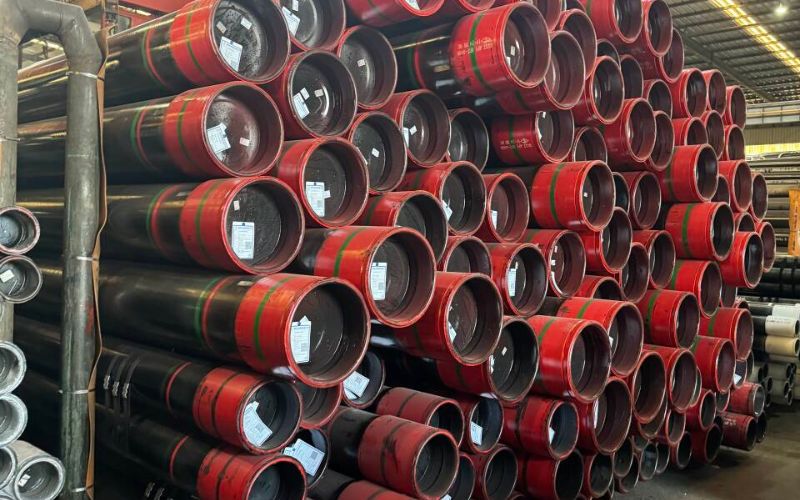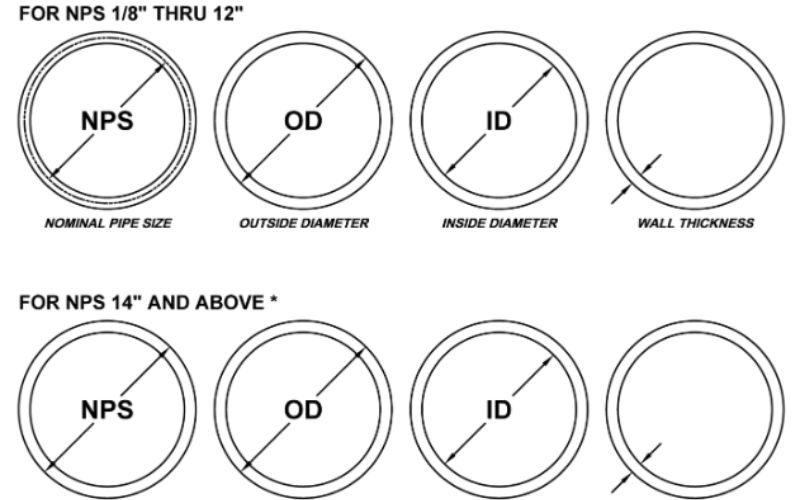Stainless steel schedule 40 pipes are the industrial and commercial piping systems’ durability, efficiency, and versatility benchmark. Understanding the fundamentals of these pipes is essential whether you are dealing with complicated construction projects, plumbing systems design or the right material for high-pressure applications. This manual goes thoroughly into the SS Schedule 40 pipes’ world, examining their main attributes, advantages, and applications in different sectors. By the end of this, you will have an unambiguous comprehension of the reason why these pipes are the preferred choice of many professionals and how they can fit your precise requirements.
Introduction to Schedule 40 Stainless Steel Pipes
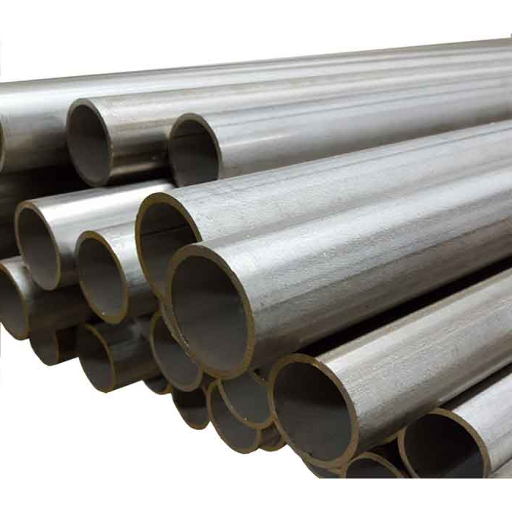
The characteristics that make schedule 40 stainless steel pipes a popular choice are their durability, versatility, and corrosion resistance. The pipes can withstand moderate pressures and are the preferred choice for various industries such as construction, plumbing, and manufacturing. Owing to their strong nature and dependable operation, they are the right choice for the transfer of liquids, gases, and similar materials in both residential and industrial situations. Aside from that, the stainless steel mixture gives them durability and low maintenance, thus making them an economical alternative for many uses.
What is Schedule 40 Pipe?
Schedule 40 piping is the most widely utilized one among all, thanks to its quality and durability. The pipe wall thickness regulated by the American National Standards Institute (ANSI) is the one that goes by the term “Schedule 40” in particular. The pipe was designed for moderate pressure handling and its wall thickness is different for each diameter; usually the wall of smaller diameter pipes is thicker.
Usually, Schedule 40 pipes consist of steel, PVC, and stainless steel. They are employed in plumbing, irrigation, and industrial applications extensively. Because of their strong construction, they can convey water, air, gases, and other liquids. Their easy fit with different kinds of fittings and installation makes them a practical and economic choice for both domestic and commercial use. Besides that, Schedule 40 PVC pipes are largely sought after in non-toxic applications because they are lightweight, corrosion resistant, and easy to work with.
Overview of Stainless Steel
Stainless steel is a long-lasting and widespread material which main property is an excellent resistance to rust and stain. It contains mostly iron, nickel, and chromium, with the percentage of chrome forming a thin, protective layer of oxide on the surface, thus preventing rust and decay. The use of stainless steel has become common in different industries such as construction, automotive, medical, and food processing, thanks to its strength and sanitizing qualities; moreover, it can be recycled and therefore considered an eco-friendly material for a variety of applications. There are different grades of stainless steel available, each one specifically developed for the respective environment, and the qualities required, such as heat resistance or aesthetics.
Importance of Pipe Schedule
The schedule of pipes is one of the significant factors that determine the wall thickness of a pipe. This factor has a direct impact on the pipe’s ability to bear internal pressures, thus making it a significant attribute in the design of piping systems for industrial, residential, or commercial applications. Usually, a higher pipe schedule means thicker walls that give more strength and durability, particularly in the case of high-pressure and high-temperature situations. Pipe schedules are a must for engineers who want to make sure the piping systems are safe and functional, thus optimizing performance and reducing the risk of failures. The right pipe schedule is a must-have for any piping application when it comes to cost, efficiency, and safety.
Specifications of Schedule 40 Stainless Steel Pipe
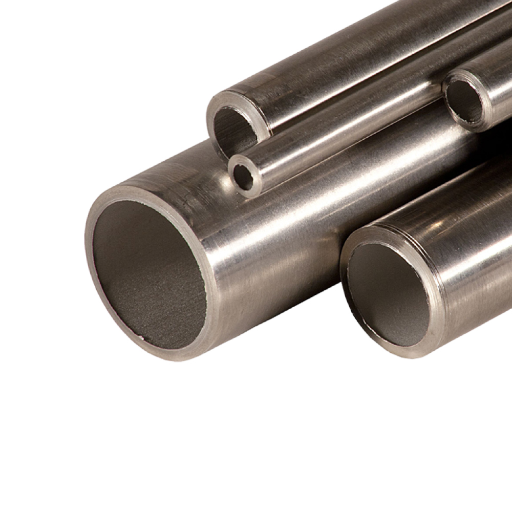
Schedule 40 stainless steel pipes are predominantly known for their perfect combination of strength, durability, and multifunctionality. These pipes have a standard wall thickness that makes it possible for them to be utilized in a wide range of applications, such as plumbing, industrial use, and construction. They resist both corrosion and high temperatures, thus providing a long service life even in difficult conditions. Most commonly found in different grades such as 304 and 316, they are meant to withstand certain pressure and temperature ranges while retaining their strength. Their characteristics enable them to be a suitable option for systems that need durability and moderate pressure handling.
Dimensions and Sizes
Schedule 40 stainless steel pipes are unrolled to be, so to speak, the king of the world in terms of specifications and sizes concerned with integration in such applications. The nominal pipe size (NPS) usually indicates the diameter of the pipe while the thickness of the wall relates to the schedule number. For example, a Schedule 40 pipe of 2 inches nominal size has an outside diameter (OD) of 2.375 inches and an approximate thickness of 0.154 inches for its wall. In the same way, the pipe with a nominal size of 4 inches exhibits an OD of 4.5 inches and a wall of around 0.237 inches thickness. These features practically ensure that the pipes will excellent performance under moderate pressure ratings and at the same time, still possess strength; hence, they are widely used in plumbing, industrial processing, and other demanding applications.
Material Grades: SS 304 and 304L
Stainless steel grades SS 304 and SS 304L belong to the group of the most used because they have amazing properties such as resistance to corrosion, of great strength and good versatility. Chromium and nickel are the two key elements in both grades and SS 304L is the low-carbon version of SS 304. Therefore, 304L has the advantage of being able to be welded without losing the strong protecting quality of corrosion resistance due to the low carbon content that prevents carbide precipitation at the weld area.
SS 304 finds its way into general use applications, letting us say industrial processing, kitchen equipment and so on, because of its oxidation and chemical resistance together with its strength. 304L, conversely, is the metal chosen for the chemical storage tanks and heat exchangers since it can withstand welding or exposure to aggressive corrosion. Both grades meet ASTM standards and thus are regarded as dependable options in a wide range of sectors for both structural and non-structural applications.
Chemical Composition and Strength
Normally, Schedule 40 stainless steel pipe is made from the two most important grades, which are 304 and 316, known for their strength and resistance to corrosion. The chemical makeup of 304 stainless steel is approx. 18-20% chromium and 8-10.5% nickel, which brings about the excellent corrosion resistance in most situations. Grade 316 consists of 16-18% chromium, 10-14% nickel, and an extra 2-3% molybdenum, which further increases its capacity to endure more extreme chemical and saline conditions.
In terms of schedule pipes strength, the Schedule 40 pipes are made to bear moderate pressure and loads. They provide a tensile strength of about 515 MPa (74,700 psi) for 304 stainless steel and slightly more for 316, thus, making them fit for a wide range of applications. Their combination of strength, corrosion resistance and versatility is what makes Schedule 40 stainless steel pipes a widely accepted choice in industries like construction, chemical processing, and water supply systems.
Types of Stainless Steel Schedule 40 Pipes
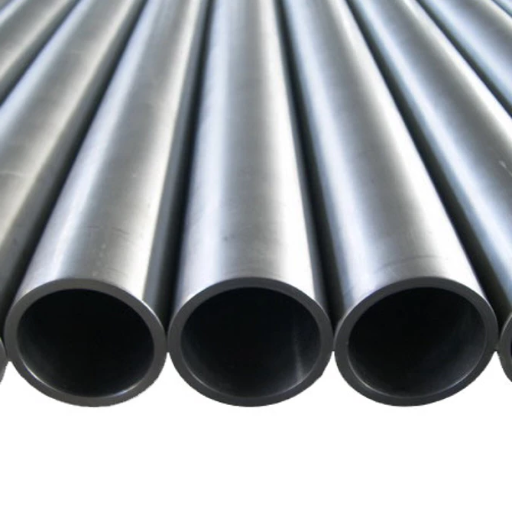
Schedule 40 stainless steel pipes come in various types, including 304, 304L, 316, 316L, and duplex stainless steel.
This table provides an overview of the types of Schedule 40 pipes with their grades, corrosion resistance, tensile strength, and primary uses, making it easier to identify the most suitable choice for specific applications.
Seamless vs. Welded Pipes
Seamless pipes are durable, pressure-resistant, and suitable for critical applications, while welded pipes are cost-effective, customizable, and ideal for non-critical uses.
Understanding Schedule 40 SS Pipe Variants
Schedule 40 stainless steel (SS) pipes have in fact become the most popular among the pipe standards, their versatility and the right mixture of strength and thickness being the main reasons for that. These pipes are produced according to the standardized thickness requirements, which assures their uniformity and reliability for different applications. Schedule 40 SS pipes, characterized by their wall thickness, are able to take medium-pressure applications and thus are widely accepted in construction, plumbing, and manufacturing sectors. The corrosion resistance and durability of SS pipes make them suitable for the transportation of water, gases, and even corrosive chemicals. The pipes whether seamless or welded, are still very much capable of supporting the design and performance aspects of both commercial and residential customers.
Different Applications of Sch 40 Pipe
- Plumbing Systems – Schedule 40 pipes are very common in both residential and commercial plumbing because of their long-lasting and non-corrosive features which facilitate the flow of water and other liquids.
- Irrigation Systems – The same type of pipes is heavily used in agriculture and landscaping as a means of water-supply and distribution system that can cover remarkably long distances.
- HVAC Systems – In heating, ventilation, and air conditioning system Sch 40 pipes have an utmost necessity as they carry refrigerants and other gases.
- Chemical Transportation – Due to their property of resisting corrosion these pipes can be employed for the transportation of chemicals in the industrial sector.
- Structural Support – Not only fluid transport, but Sch 40 pipes are also applied in scaffolding, frames, and other structural applications because of their strength and dependability.
Applications of Stainless Steel Schedule 40 Pipes
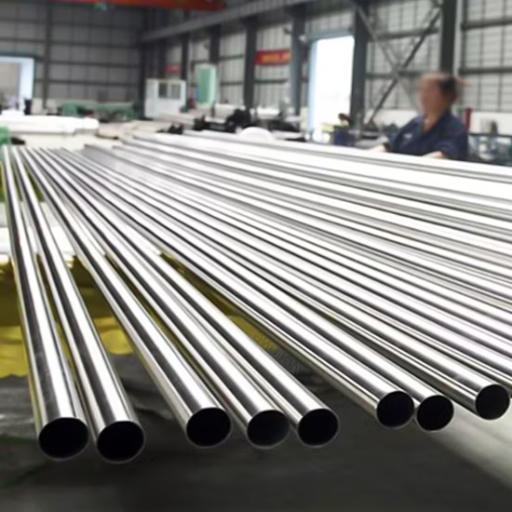
Stainless Steel Schedule 40 pipes are mostly used in different sectors because of their long-lasting nature and multifunctional approach. The principal use of these pipes can be seen in plumbing which involves water and gas transportation, HVAC systems for refrigerants, chemical processing for dealing with corrosive agents, and additionally, in construction like scaffolding and frames. Their power and ability to resist corrosion lead to their use even in tough environments.
Industrial Applications
Stainless Steel Schedule 40 pipes are the ones you can’t do without if you work in an industry where you need durable and corrosion-resistant materials. You will find them in oil and gas pipelines, where they make the transport of oil and gas products safe and efficient. Moreover, they are used in chemical factories for handling harsh chemicals and in power generation facilities for carrying steam and water. Their sturdiness and dependability are also reasons why they are being used in different industrial areas where heavy-duty tools and machines are being manufactured.
Residential and Commercial Uses
Stainless Steel Schedule 40 pipes are highly appreciated for their outstanding durability and corrosion resistance in both residential and commercial applications. In the residential sector, the pipes are used to set up plumbing systems where water is supplied reliably without the eventuality of leakage or rusting at all. Besides, these pipes are also used for aesthetics and structurally such as the railing systems of the house, the frames of modern-looking furniture, and the designer kitchens, etc. where the sleekness of the pipes adds to the overall décor.
On the commercial side, these pipes form the core of a building’s infrastructure and are often installed in HVAC, fire sprinkler, and drainage systems. Their capacity to endure extreme pressure and high temperature makes them suitable for operations that require strong and long-term piping solutions. Furthermore, the low-maintenance and eco-friendly characteristics of these pipes make them even more attractive to modern building and renovation projects around the globe.
Advantages of Using Schedule 40 Stainless Steel Pipe
Durability
Schedule 40 pipes made of stainless steel are extremely resistant to rust, corrosion, and physical damage, thus their long-lasting performance is guaranteed even in the harshest of environments.
High-Pressure Tolerance
These pipes are able to withstand extreme pressures and temperatures making them ideal for use in industrial and heavy-duty applications.
Low Maintenance
Their ability to resist wear and tear implies that the need for regular repairs or replacements is minimized, hence time and costs are saved in the process.
Eco-Friendly
Being a recyclable material, stainless steel has its own contribution towards sustainable construction practices and lessening the impact on the environment.
Versatility
Schedule 40 pipes can be used in a variety of applications such as plumbing, HVAC systems, and structural uses which makes them a suitable choice for different industries due to their versatility.
Installation and Maintenance of Schedule 40 Pipes
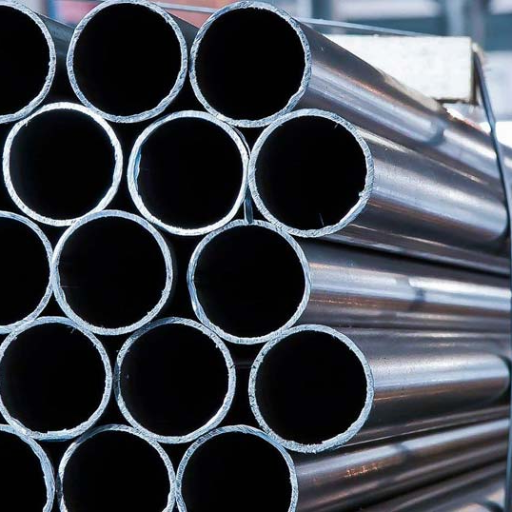
The correct installation and upkeep of Schedule 40 pipes are the factors that mainly decide their life span and efficient performance. Accurately measuring and cutting the pipes to fit the application is essential; then it is necessary to use the proper fittings and couplings to connect them securely. It is important to take the necessary measures to prevent leaks, for instance, by using PTFE tape for sealing threads. Regular maintenance consists of checking for corrosion, leaks, or damaged areas, and responding to the issues identified without delay. Furthermore, in order to keep the pipes in good working order, cleaning them from time to time to eliminate any build-up or blockage will improve their efficiency and prolong their life. By following these procedures, Schedule 40 pipes can be counted on to work without problems in a variety of applications.
Installation Guidelines
- Prepare the Pipes and Tools – Before beginning the installation, gather all necessary tools and make sure that the Schedule 40 pipes are clean and free from any kind of debris or damage.
- Measure and Cut – The next step is to accurately measure the required length of the pipe and cut it using a pipe cutter or saw suitable for Schedule 40 material to ensure that the cuts are clean and straight.
- Deburr the Edges – With a deburring tool, remove rough edges or burrs from the cut ends of the pipe to make sure that the fitting will be perfect and will not leak.
- Apply Primer and Cement (for PVC) – For piping with PVC Schedule 40 pipes, Apply a pipe primer on the ends and connecting fittings, then followed by pipe cement to make a strong bond.
- Threading (for Metal Pipes) – Clean the threads on metal Schedule 40 pipes and use PTFE tape or pipe thread sealant for a connection that is not going to leak.
- Join the Pipes – Make a solid connection of pipes to their fittings or couplings, ensuring the connection is tight and correctly aligned.
- Secure the Installation – It is important to use clamps or straps to secure the pipes down, while not creating stress points and if necessary, allowing for thermal expansion.
- Testing for Leaks – After installing, pressurize the system and inspect every connection and joint for leaks. If any issues are found, correct them immediately.
- Regular Maintenance – Check the pipes on a regular basis so that the system is always in optimal condition and there are no clogs or damages.
Maintenance Best Practices
To ensure the longevity and functionality of Schedule 40 pipes, it is essential to implement a regular and proactive maintenance routine. Start by conducting periodic visual inspections to identify signs of wear, cracks, or discoloration, which may indicate potential issues. For systems carrying liquids or gases, ensure that connections and joints remain properly sealed to prevent leaks. Clean the pipes regularly to avoid the buildup of debris, which can lead to clogs or pressure imbalances. Additionally, check for any external factors, such as temperature fluctuations or physical impacts, that might compromise the material’s integrity. Where applicable, utilize protective coatings or insulation to safeguard the pipes from environmental damage. By adhering to these best practices, you can maximize the efficiency and reliability of your Schedule 40 piping system.
Common Issues and Solutions
In my experience, Schedule 40 pipes mainly suffer from sediment clogging, which I handle through regular cleaning and maintenance. Besides, pipes can crack or leak if subjected to extreme temperature variations or if an impact occurs; I do this by applying proper insulation or protective coating. When I encounter pressure imbalances, I usually look for blockages or damaged sections and replace any compromised components. Being proactive, I believe that these steps are capable of effectively resolving most issues and guaranteeing the longevity of the system.
Reference Sources
- Schedule 40 Stainless Steel Pipe Chart – N-Pipe
This source provides detailed information about dimensions, thickness, and applications of Schedule 40 stainless steel pipes. - Schedule 40 Pipe—A Comprehensive Guide – PandaPipe
A comprehensive guide discussing the properties, corrosion resistance, and applications of Schedule 40 pipes. - Schedule 40 Stainless Steel Pipe – Alcobra Metals
This source highlights the versatility and performance strength of Schedule 40 stainless steel pipes in water and gas lines. - Black Steel Pipe Supplier In China
- Guide for Schedule 40 Black Pipe
Frequently Asked Questions (FAQs)
What is the Difference Between Schedule 40 and Schedule 80 Stainless Steel Pipes?
Schedule 40, on the contrary, to Schedule 80 pipes with a higher wall thickness for higher pressure applications has a more modest wall thickness. The thickness of Schedule 40 pipes generally meets the requirements for many standard applications, while Schedule 80 pipes are generally used in those situations where more strength and durability are required because of their thicker walls.
What is the Inside Diameter of Schedule 40 Stainless Steel Pipe?
The inside diameter of schedule 40 stainless steel pipe is contingent on the nominal pipe size. For instance, a 2-inch schedule 40 stainless steel pipe has an inside diameter of around 2.067 inches. Precision in measurements is essential, thus referring to industry standards is necessary as there can be variations depending on different schedules.
What Applications Use Schedule 40 Seamless Pipe?
Various applications such as water transport, HVAC systems, and industrial piping are some of the common uses of schedule 40 seamless pipes. Its strength-to-weight ratio has made it a popular choice for both residential and commercial installations with moderate-pressure expectations.
How is Schedule 40 Stainless Steel Pipe Fabricated?
Schedule 40 stainless steel pipe is made through a procedure that involves forming, welding, and then finishing the pipe until it meets the specified dimensions and tolerances. The piping process guarantees that the pipe conforms to ASME regulations and is fit for the intended application, whether that be for water supply or chemical transport.
What Grade of Stainless Steel is Used for Schedule 40 Pipes?
304 stainless steel, which is the most common grade used for Schedule 40 pipes, is well known for its great corrosion resistance and toughness. In some cases, 316 stainless steel can also be used for applications requiring a higher-than-usual resistance to chlorine and other harsh environments.
Can Schedule 40 Stainless Steel Pipe Be Used for High-Pressure Applications?
Even though the schedule 40 stainless steel pipe can sustain moderate pressure, it is not advisable to use it in high-pressure applications. Schedule 80 or pipes of higher grades should be used in such scenarios as they are designed to resist high pressures thanks to their thicker walls.
This comprehensive guide provides all the essential information about stainless steel Schedule 40 pipes, from specifications and types to applications and maintenance. Whether you’re working on industrial projects or residential installations, understanding these pipes’ characteristics will help you make informed decisions for your specific needs.



